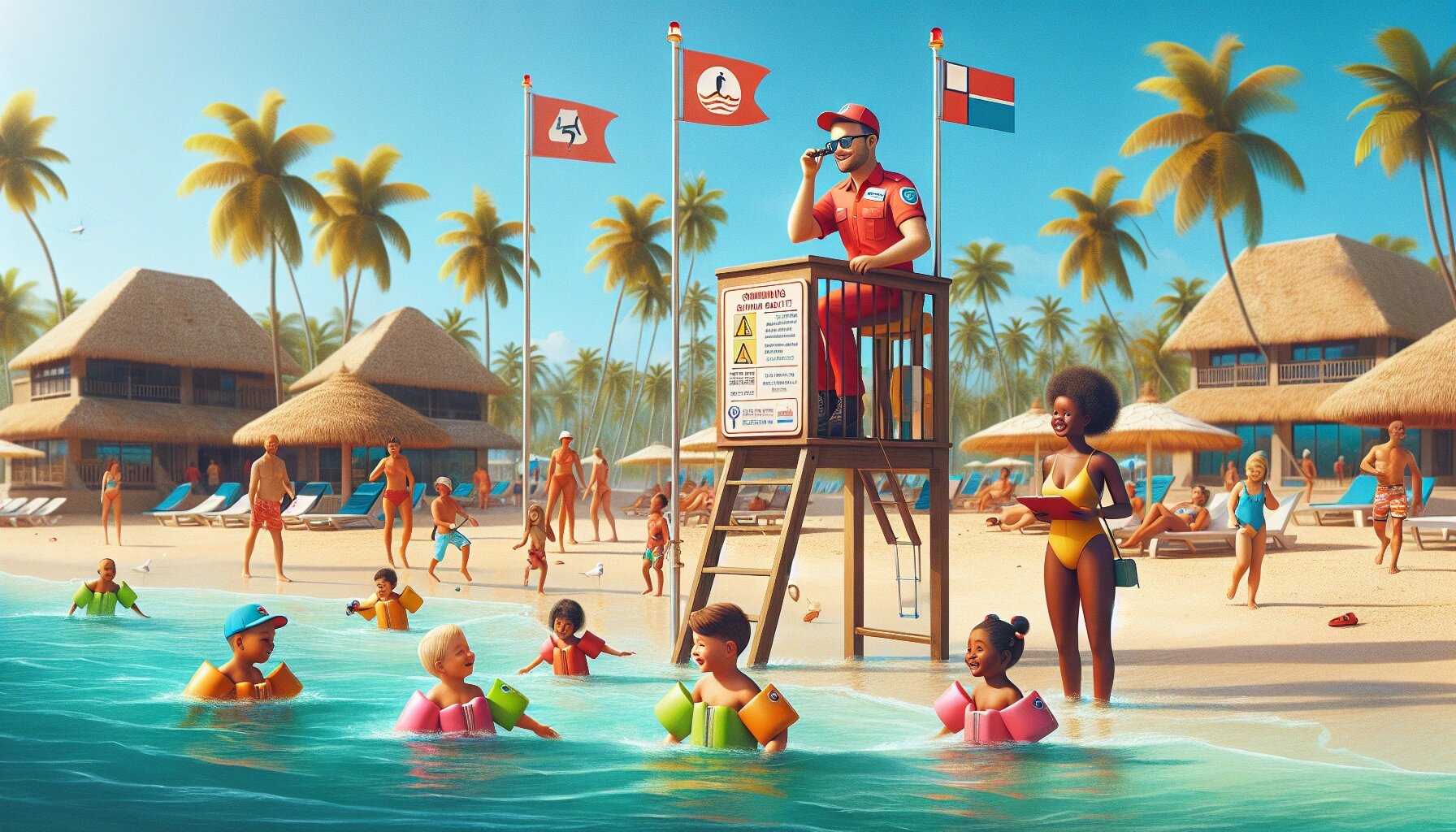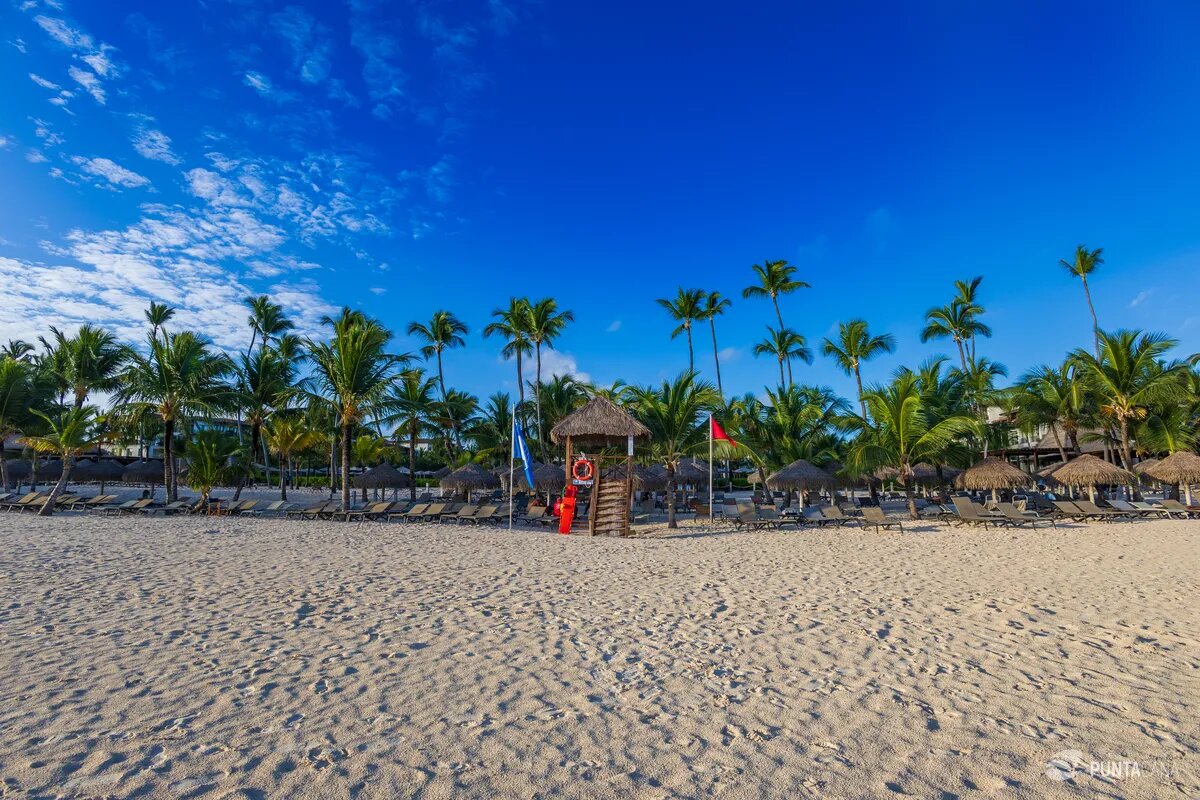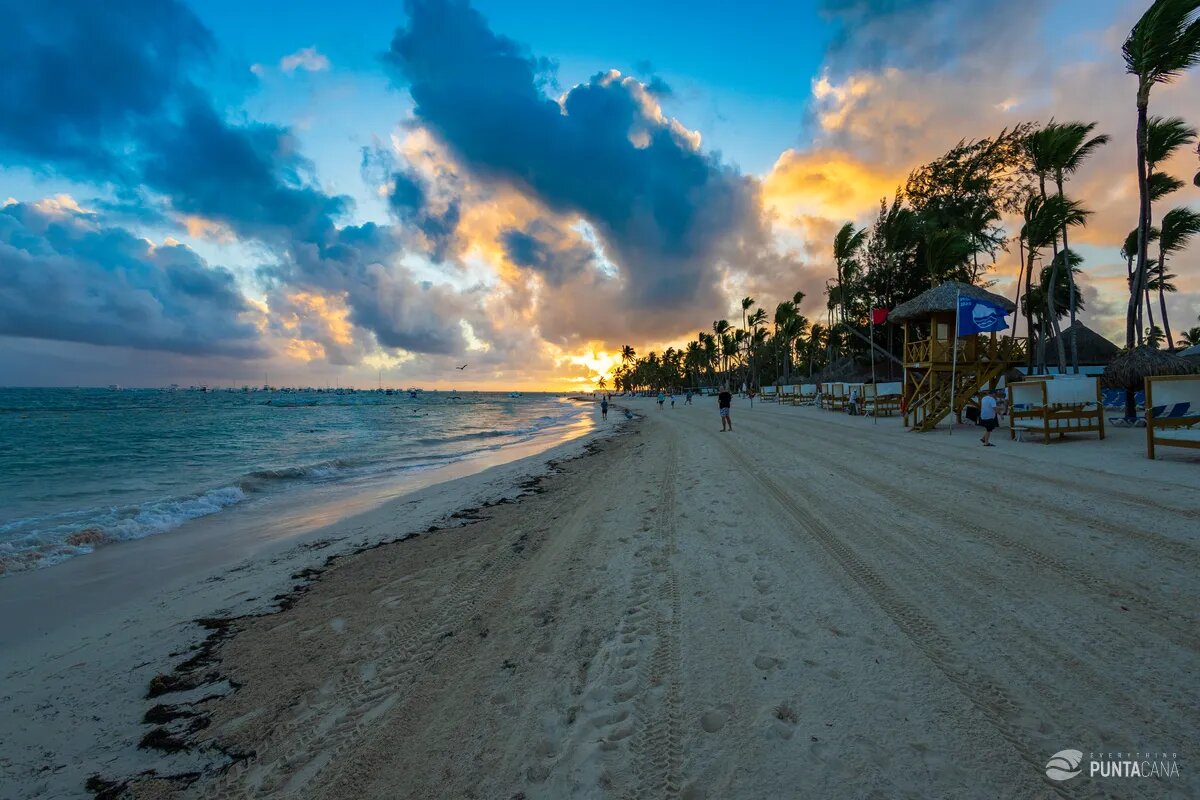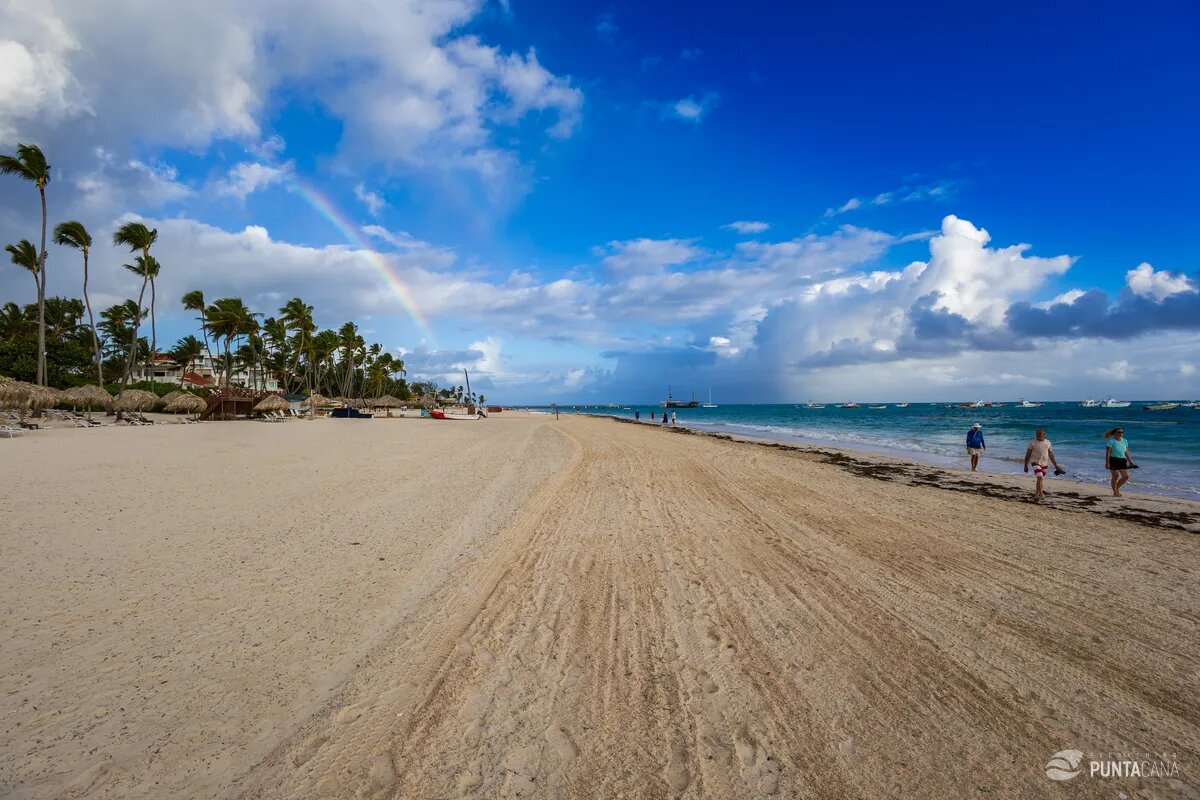Is It Safe to Swim in the Ocean Near My Rental in Punta Cana?
Understanding Ocean Conditions in Punta Cana

Is It Safe to Swim in the Ocean Near My Rental in Punta Cana?
Punta Cana, with its stunning beaches and vibrant marine life, is a must-visit destination for ocean enthusiasts. However, understanding the ocean conditions is crucial for ensuring a safe and enjoyable swimming experience.
1. Typical Weather Patterns
Punta Cana boasts a tropical climate, characterized by warm temperatures year-round. The region experiences two primary seasons: the dry season from December to April and the rainy season from May to November. The weather during the dry season is typically sunny with minimal rainfall, making it ideal for beach activities. Conversely, the rainy season, while still warm, can bring tropical storms and increased humidity.
A notable aspect of Punta Cana’s weather is the occasional hurricane activity during the rainy season, particularly from June to November. While direct hits are rare, these storms can bring strong winds and rough seas, impacting ocean conditions significantly. Therefore, it’s advisable to monitor weather forecasts and heed any advisories during this period.
2. Ocean Currents and Tides
The ocean currents in Punta Cana are influenced by various factors, including wind patterns and the geography of the coastline. The area is generally known for its relatively calm waters, especially along the east coast where protective reefs act as natural barriers. However, certain spots may experience stronger currents due to the open sea exposure.
Understanding tide patterns is equally important. Punta Cana experiences two high tides and two low tides each day. Tides can affect the depth and reach of the water, with low tides exposing more of the beach and reefs, while high tides may lead to stronger waves and currents. Visitors are encouraged to check tidal schedules to ensure swimming during safer times.
3. Marine Life Considerations
The marine ecosystem around Punta Cana is rich and diverse, featuring a plethora of species ranging from colorful fish to majestic sea turtles. While these creatures are generally harmless, there are a few considerations to keep in mind for safety.
Jellyfish are occasionally present in the waters, especially during certain times of the year. Although most species in Punta Cana are not dangerous, their stings can cause discomfort. It’s wise to inquire locally about jellyfish activity and take necessary precautions, such as wearing protective swimwear.
Additionally, while rare, encounters with stingrays are possible, particularly near sandy bottoms. To avoid accidental stings, practice the “stingray shuffle” by shuffling your feet in the sand as you walk to alert stingrays of your presence.
In conclusion, while Punta Cana offers a delightful ocean experience, understanding the weather patterns, ocean currents, and marine life interactions is essential for a safe and enjoyable swim. Staying informed and prepared can enhance your beach adventures.
Safety Precautions for Swimming in Punta Cana

Punta Cana
When planning a beach day in Punta Cana, it’s crucial to prioritize safety to ensure an enjoyable experience. Understanding the local safety measures can significantly enhance your beach outing.
1. Beach Flag System
The beach flag system is an essential tool used globally, including in Punta Cana, to communicate the safety of swimming conditions. These flags are color-coded to provide a visual warning system for beachgoers, alerting them to potential hazards.
- Green Flag: Indicates that conditions are safe for swimming. However, always remain vigilant and keep an eye on changing conditions.
- Yellow Flag: Caution is advised. There might be moderate surf or currents, so less experienced swimmers should be careful.
- Red Flag: Dangerous conditions. Swimming is not advised due to strong currents or high surf.
- Double Red Flag: The beach is closed for swimming. Entering the water is prohibited.
- Purple Flag: Indicates the presence of potentially dangerous marine life, such as jellyfish or stingrays.
Understanding and respecting these flags can prevent accidents and ensure a safe swimming experience.
2. Lifeguard Presence and Emergency Services
Having lifeguards on duty is a critical aspect of beach safety. In Punta Cana, popular beaches often have lifeguards who are trained to respond quickly to any emergencies. It’s advisable to swim near these areas for immediate assistance if needed.
In case of emergencies, knowing where the nearest lifeguard station is located can save valuable time. Familiarize yourself with the location of emergency services and how to reach them quickly.
Emergency contact numbers should be saved on your phone, and it’s a good idea to know the basic phrases in Spanish to communicate effectively if assistance is required. While lifeguards play a vital role in ensuring safety, they might not always be present at every beach, so exercising personal caution is always recommended.
3. Recommended Swimming Gear and Sunscreen Use
Equipping yourself with the right gear can enhance both safety and comfort during your swim.
- Swimwear: Opt for UV-protective swimwear to safeguard against harmful sun exposure.
- Footwear: Water shoes can protect your feet from sharp coral or rocks.
- Snorkeling Gear: If exploring underwater, ensure you have a well-fitting mask and snorkel. A vest can provide extra buoyancy.
The tropical sun in Punta Cana can be intense. Applying a high-SPF, water-resistant sunscreen is essential to protect your skin. Reapply it every two hours, or more frequently if you’re swimming or sweating.
Essential Swimming Gear and Sunscreen Application Tips
| Item | Purpose | Recommendation |
|---|---|---|
| UV-Protective Swimwear | Sun Protection | Look for fabric with UPF 50+ |
| Water Shoes | Foot Safety | Protect against sharp objects |
| Snorkel Gear | Enhanced Experience | Ensure proper fit |
| Sunscreen (SPF 30+) | Skin Protection | Reapply every 2 hours |
By following these safety precautions, you can enjoy the beautiful waters of Punta Cana with peace of mind, knowing you’re well-prepared to deal with any challenges the ocean might present.
Local Regulations and Guidelines
When planning your ocean adventures in Punta Cana, understanding the local regulations and guidelines is essential to ensure a safe and enjoyable experience. Not only do regulations protect swimmers, but they also help preserve the stunning marine ecosystem that makes Punta Cana such a sought-after destination.

Punta Cana
1. Protected Marine Areas
Punta Cana is home to several protected marine areas designed to conserve its rich biodiversity. These areas are often designated as no-swim zones to safeguard both the marine life and the visitors. For example, the Punta Cana Ecological Reserve is a protected area known for its tropical flora and fauna, where swimming may be restricted to minimize human impact.
Visitors should respect these boundaries and adhere to guidelines provided by local authorities and conservation organizations. These rules are not only crucial for environmental preservation but also for ensuring the safety of swimmers, as protected areas can often house delicate marine ecosystems that are best viewed from a distance.
2. Environmental Protection Laws
Dominican Republic’s environmental laws are designed to preserve the ocean ecosystem. These laws typically include restrictions on waste disposal, fishing, and other activities that could potentially harm the marine environment. Such regulations are strictly enforced, and violations may lead to fines or other penalties.
For tourists, this means adhering to guidelines about not disturbing wildlife, avoiding littering, and respecting local customs and rules. Understanding these laws not only helps in contributing to the sustainability of the region but also ensures that tourists can enjoy the natural beauty of Punta Cana for years to come.
3. Permits and Permissions
While casual swimming in designated areas usually does not require permits, certain water activities may need special permissions. Activities such as scuba diving, snorkeling in certain reefs, or fishing might require permits, which are generally issued by local authorities or tour operators.
Before engaging in any specialized water activities, it is prudent to check with your tour provider or the local tourism board to understand any permit requirements. Ensuring you have the necessary permissions can prevent legal issues and enhance your overall experience by allowing access to some of the most breathtaking underwater locations.
Exploring Alternative Swimming Options
If you’re unsure about swimming in the ocean near your rental in Punta Cana, there are numerous alternative swimming options that promise safety and enjoyment without compromising on the tropical experience. From lavish resort pools to serene protected bays, these options provide a delightful respite.

Punta Cana
1. Resort Pools and Water Parks
Punta Cana is renowned for its luxurious resorts, many of which offer expansive pool facilities that rival the beauty of the ocean itself. These pools often come with a range of amenities like swim-up bars, infinity edges, and children’s play areas, making them perfect for families or those seeking a leisurely swim.
For those looking for a more adventurous aquatic experience, Punta Cana’s water parks are an ideal choice. Parks such as Sirenis Aquagames offer thrilling slides, wave pools, and lazy rivers, ensuring a fun-filled day for all ages. These parks are meticulously maintained with a focus on safety, providing peace of mind alongside entertainment.
Comparison of Resort Pools and Water Parks in Punta Cana
| Facility Name | Features | Target Audience |
|---|---|---|
| Resort Pools | Infinity edges, swim-up bars, children’s play areas | Families, couples, solo travelers |
| Water Parks | Slides, wave pools, lazy rivers | Families, adventure seekers |
2. Protected Bays and Coves
Punta Cana’s coastline is dotted with protected bays and coves that offer tranquil waters ideal for swimming. These spots are generally sheltered from strong currents and waves, providing a safe environment for swimmers of all skill levels.
One such location is the serene Cabo Engaño, known for its calm waters and breathtaking scenery. Similarly, Playa Blanca offers a pristine beach experience with its gentle waves and soft sands. These hidden gems are perfect for those seeking a peaceful retreat away from the more crowded tourist beaches.
3. Organized Tours and Excursions
For those looking to combine swimming with exploration, organized tours and excursions offer a fantastic opportunity. These tours often include visits to secluded beaches, snorkeling spots, and natural pools, providing a comprehensive experience of Punta Cana’s aquatic beauty.
Tours often include knowledgeable guides who ensure safety and provide insights into the region’s marine life and ecology. Some of the popular excursions include trips to Saona Island and Catalina Island, both of which are famed for their crystal-clear waters and vibrant underwater ecosystems.
Whether you choose the sophisticated ambiance of a resort pool, the serenity of a protected bay, or the adventure of an organized tour, Punta Cana offers diverse swimming options that ensure both safety and enjoyment. These alternatives provide excellent opportunities to relax and unwind, making your tropical getaway unforgettable.
Travel Insurance Considerations
When planning a trip to Punta Cana, ensuring you have the right travel insurance can make a world of difference. While the allure of swimming in the ocean is strong, it’s crucial to be prepared for unexpected situations. Understanding how travel insurance plays a role in your swimming safety is key to a worry-free vacation.
1. Coverage for Water Activities
Swimming in the ocean comes with its own set of risks, and having travel insurance that covers water activities is essential. Many standard travel insurance policies may not automatically include coverage for activities such as swimming in open water, snorkeling, or diving. Therefore, it’s important to look for a policy that specifically mentions coverage for these activities.
- Check the Policy Details: Ensure the policy includes coverage for potential accidents or injuries that could occur while swimming in the ocean.
- Understand the Limits: Be aware of any limitations or exclusions related to water activities, especially if you plan to engage in more adventurous water sports.
- Evaluate Additional Coverage Options: Some insurance providers offer add-ons for high-risk activities, which can be beneficial if your plans include such activities.
2. Emergency Medical Services
Access to emergency medical services is another critical aspect when swimming in unfamiliar waters. Travel insurance can provide you with peace of mind by covering medical expenses and ensuring you have access to necessary medical services in case of an emergency.
- Know the Nearest Medical Facilities: Familiarize yourself with the location of nearby hospitals or clinics that are equipped to handle ocean-related injuries.
- Emergency Evacuation: Select a policy that includes emergency medical evacuation, which can be vital if local facilities are inadequate for your needs.
- 24/7 Assistance: Opt for an insurance provider that offers round-the-clock assistance to guide you through the process in emergencies.
3. Tips for Choosing the Right Insurance Plan
Selecting the right travel insurance plan requires careful consideration of several factors to ensure comprehensive coverage for your swimming adventures.
- Assess Your Activities: Consider all the activities you plan to engage in and ensure they’re covered under the policy.
- Compare Policies: Look at different insurance providers and compare their offerings to find one that best suits your needs and budget.
- Read the Fine Print: Pay attention to the terms and conditions, especially regarding exclusions related to water activities.
- Consult an Insurance Expert: If you’re unsure, consult with an insurance expert to help guide your decision-making process.
Travel insurance is not just an optional add-on; it is a crucial component of your travel planning, particularly when engaging in ocean activities in Punta Cana. By ensuring you have the right coverage, you can enjoy your vacation with confidence and peace of mind.
Frequently Asked Questions
What are the general ocean conditions in Punta Cana for swimming?
Punta Cana is known for its beautiful beaches and generally calm ocean conditions, especially in areas protected by coral reefs. However, it is important to be aware of changing weather conditions and potential currents. Always observe local safety flags and advisories before swimming.
Are there any specific safety precautions I should take while swimming in Punta Cana?
Yes, always swim in designated areas where lifeguards are present. Pay attention to safety flags that indicate water conditions: green for safe, yellow for caution, and red for dangerous conditions. Avoid swimming alone and keep an eye on weather updates.
What should I do if I encounter a strong current while swimming?
If you find yourself caught in a strong current, remain calm. Do not try to swim against it. Instead, swim parallel to the shore until you’re out of the current, and then return to the beach. Alert a lifeguard if you need assistance.
Are there any marine animals to be concerned about while swimming in Punta Cana?
While encounters with dangerous marine life are rare, it’s possible to see jellyfish or sea urchins. To minimize risks, avoid touching marine life and shuffle your feet while walking in shallow waters to scare away stingrays.
Is the water quality safe for swimming in Punta Cana?
The water quality in Punta Cana is generally safe for swimming. Local authorities regularly monitor the beaches, and popular tourist areas are typically well-maintained. However, after heavy rain, stormwater runoff can affect water quality temporarily.
What time of year is best for swimming in Punta Cana?
The best time for swimming in Punta Cana is during the dry season, from December to April, when the weather is more predictable and the ocean conditions are typically calm.
Are there lifeguards on duty at Punta Cana beaches?
Many of the popular beaches in Punta Cana have lifeguards on duty, especially those near resorts. However, not all beaches are monitored, so it’s important to take personal precautions and swim in designated areas.
What should I do if I experience a medical emergency while swimming?
If you or someone else experiences a medical emergency, alert a lifeguard immediately if one is present. If not, call for emergency services and seek medical attention as soon as possible.
How can I stay informed about ocean safety in Punta Cana?
Stay informed by checking local news, weather reports, and beach advisories. Most hotels and resorts provide safety information to their guests, and you can also ask the local authorities for updates.
Updated on: . Author:
